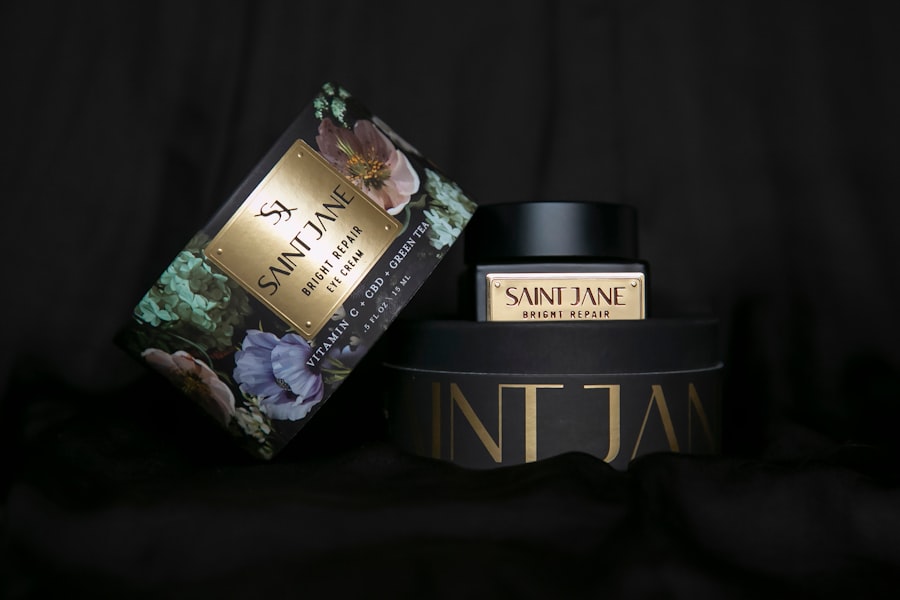When you embark on a journey of skin healing, it’s essential to grasp the intricacies of the healing process. Your skin is a remarkable organ, constantly regenerating and repairing itself. After any procedure or injury, your body initiates a series of biological responses aimed at restoring the skin’s integrity.
During the inflammatory phase, which lasts for a few days, your body sends white blood cells to the affected area to combat any potential infection. You may notice redness and swelling as your body works diligently to heal.
As you transition into the proliferation phase, which can last several weeks, new tissue begins to form. This is when you might see scabs or crusts developing as your skin starts to regenerate. It’s crucial to be patient during this time, as your body is hard at work repairing itself.
The final phase, remodeling, can take months or even years, during which the new skin matures and strengthens. Understanding this timeline can help you manage your expectations and provide the necessary care to support your skin through each stage of healing.
Key Takeaways
- Understanding the Healing Process: Knowing how the skin heals can help in managing expectations and taking appropriate care during the recovery period.
- Managing Discomfort and Redness: Utilizing gentle and soothing products can help in managing discomfort and reducing redness during the healing process.
- Sun Protection and Sunscreen: Protecting the skin from sun exposure is crucial for preventing damage and maintaining the results of the healing process.
- Avoiding Harsh Products: Harsh products can irritate the skin and hinder the healing process, so it’s important to avoid them during recovery.
- Keeping the Skin Hydrated: Proper hydration is essential for promoting healing and maintaining the health of the skin.
Managing Discomfort and Redness
Experiencing discomfort and redness during the healing process is common, but there are effective strategies to manage these symptoms. First and foremost, it’s important to listen to your body. If you feel pain or irritation, consider applying a cold compress to the affected area.
This can help reduce inflammation and provide immediate relief. Additionally, over-the-counter pain relievers can be beneficial if discomfort becomes overwhelming. Always consult with a healthcare professional before taking any medication to ensure it’s appropriate for your situation.
Look for products that contain ingredients like aloe vera or chamomile, known for their calming properties. These natural remedies can help alleviate irritation and promote a more comfortable healing experience.
Remember that while some redness is normal, excessive or prolonged redness may indicate an issue that requires medical attention. Keeping an open line of communication with your healthcare provider will ensure that you receive the best care possible during your recovery.
Sun Protection and Sunscreen

One of the most critical aspects of skin healing is protecting your skin from harmful UV rays. Sun exposure can significantly hinder the healing process and lead to complications such as hyperpigmentation or scarring. Therefore, it’s essential to incorporate sun protection into your daily routine, especially during the initial healing phase.
Wearing a broad-spectrum sunscreen with an SPF of at least 30 is a must, even on cloudy days or when you’re indoors, as UV rays can penetrate windows. In addition to sunscreen, consider wearing protective clothing such as wide-brimmed hats and long sleeves when spending time outdoors. This added layer of protection can shield your healing skin from direct sunlight and minimize the risk of irritation.
If you’re planning to be outside for an extended period, seek shade whenever possible. By prioritizing sun protection, you not only enhance your healing process but also safeguard your skin’s long-term health.
Avoiding Harsh Products
| Product Type | Percentage of Users |
|---|---|
| Organic Skincare | 75% |
| Natural Hair Care | 60% |
| Gentle Cleansers | 80% |
As you navigate the healing process, it’s crucial to be mindful of the products you apply to your skin. Harsh ingredients found in many skincare products can exacerbate irritation and delay healing. Avoid products containing alcohol, fragrances, or strong exfoliants, as these can strip your skin of its natural oils and disrupt the healing process.
Instead, opt for gentle formulations specifically designed for sensitive or healing skin. When selecting skincare products, look for those labeled as hypoallergenic or non-comedogenic. These products are less likely to cause irritation or clog pores, making them ideal for your healing skin.
Additionally, consider consulting with a dermatologist who can recommend suitable products tailored to your specific needs. By being cautious about what you apply to your skin, you can create an optimal environment for healing and recovery.
Keeping the Skin Hydrated
Hydration plays a vital role in the healing process, as it helps maintain skin elasticity and promotes cellular repair. Drinking plenty of water is essential for overall health and can significantly impact how well your skin heals. Aim for at least eight glasses of water a day, adjusting based on your activity level and climate conditions.
Staying hydrated from within will support your body’s natural healing mechanisms. In addition to internal hydration, external moisture is equally important. Incorporate a hydrating serum or moisturizer into your skincare routine to lock in moisture and prevent dryness.
Look for products containing hyaluronic acid or glycerin, which are known for their ability to attract and retain water in the skin. Regularly applying these hydrating products will help keep your skin supple and promote a smoother healing process.
Gentle Cleansing Routine
Establishing a gentle cleansing routine is paramount during the healing process. Your skin may be more sensitive than usual, so it’s essential to choose a mild cleanser that won’t irritate or strip away natural oils. Opt for a fragrance-free, sulfate-free cleanser that effectively removes dirt and impurities without causing additional discomfort.
When cleansing your skin, use lukewarm water instead of hot water, as hot temperatures can exacerbate irritation and dryness. Gently pat your skin dry with a soft towel rather than rubbing it vigorously. This simple adjustment can make a significant difference in how your skin feels during the healing process.
By adopting a gentle cleansing routine, you create a nurturing environment that supports your skin’s recovery.
Regular Moisturizing
Moisturizing is a fundamental aspect of skincare that should not be overlooked during the healing process. Keeping your skin well-hydrated helps prevent dryness and flakiness while promoting overall comfort. Choose a rich moisturizer that contains nourishing ingredients such as ceramides or shea butter to provide deep hydration and support the skin barrier.
Incorporate moisturizing into your daily routine by applying it immediately after cleansing while your skin is still slightly damp. This technique helps lock in moisture more effectively. Additionally, consider using an occlusive agent like petroleum jelly on particularly dry areas or where scabs may form; this will create a protective barrier that aids in healing while preventing moisture loss.
Follow-Up Care and Maintenance
Once the initial healing phase has passed, follow-up care becomes essential for maintaining healthy skin in the long run. Regular check-ins with your healthcare provider or dermatologist will ensure that any lingering issues are addressed promptly. They can provide guidance on when it’s safe to resume certain activities or introduce new products into your routine.
In addition to professional care, establish a consistent skincare regimen that focuses on prevention and maintenance. Incorporate products that promote skin health, such as antioxidants and peptides, which can help protect against environmental damage and support collagen production. By prioritizing follow-up care and maintenance, you set yourself up for long-term success in achieving healthy, radiant skin.
In conclusion, understanding the healing process and implementing effective strategies for managing discomfort, protecting against sun damage, avoiding harsh products, keeping skin hydrated, maintaining a gentle cleansing routine, regular moisturizing, and committing to follow-up care are all vital components of achieving optimal skin health post-injury or procedure. By taking these steps seriously and being proactive in your skincare approach, you empower yourself to navigate the healing journey with confidence and grace.
After undergoing laser hair removal on your face, it is crucial to follow proper aftercare instructions to ensure optimal results and minimize any potential side effects. One helpful resource for learning about laser hair removal aftercare for the face is the article on InLaserHairRemoval. This article provides valuable tips and guidelines for caring for your skin post-treatment, including avoiding sun exposure, using gentle skincare products, and staying hydrated. By following these recommendations, you can help maintain smooth, hair-free skin and prevent any complications.
FAQs
What is laser hair removal aftercare for the face?
Laser hair removal aftercare for the face refers to the steps and precautions that should be taken after undergoing a laser hair removal treatment on the facial area. This includes specific skincare routines and practices to ensure the best results and minimize any potential side effects.
What are some common aftercare practices for laser hair removal on the face?
Common aftercare practices for laser hair removal on the face may include avoiding sun exposure, using gentle skincare products, avoiding exfoliation, and keeping the treated area clean and moisturized. It is also important to follow any specific instructions provided by the laser hair removal technician.
How long does it take for the skin to recover after laser hair removal on the face?
The recovery time after laser hair removal on the face can vary from person to person. Generally, the skin may appear red and slightly swollen immediately after the treatment, but these side effects typically subside within a few hours to a few days. It is important to follow proper aftercare practices to aid in the recovery process.
Are there any specific products to avoid after laser hair removal on the face?
After laser hair removal on the face, it is recommended to avoid using harsh skincare products, such as those containing exfoliating acids or strong fragrances. Additionally, it is important to avoid sun exposure and to use sunscreen if going outside.
What are some potential side effects of laser hair removal on the face?
Potential side effects of laser hair removal on the face may include redness, swelling, and temporary discomfort. In rare cases, there may be changes in skin pigmentation or scarring. Following proper aftercare practices can help minimize these risks.







